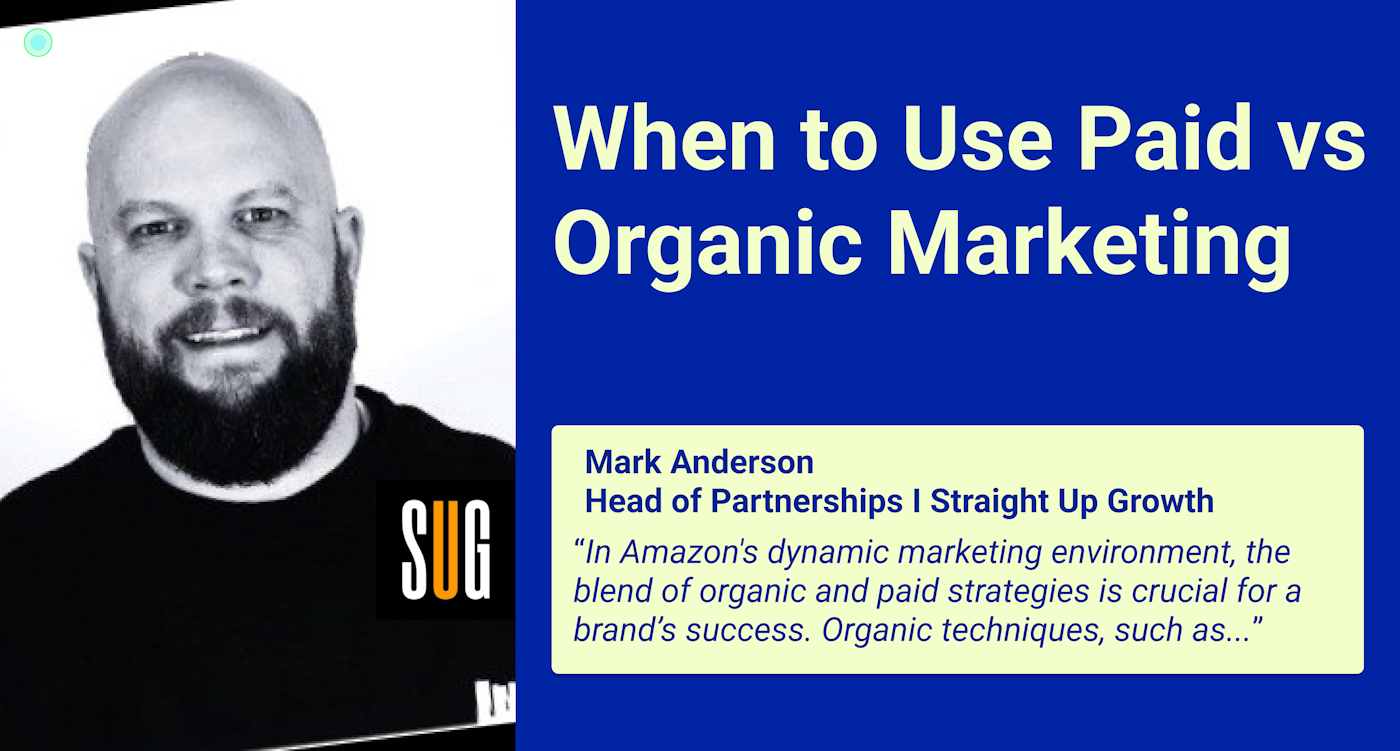When to Use Paid vs Organic Marketing
Are you leveraging the right marketing strategy to skyrocket your business growth?
Selecting the appropriate marketing approach can significantly influence your business's success. Marketers today face a critical decision: should they invest in paid marketing to achieve quick results, or should they develop a robust foundation with organic marketing for sustained success? We'll explore both strategies to help you determine which option might best align with your business goals.
This exploration begins with a clear definition of both paid and organic marketing, supplemented by real-world examples that illustrate their roles in a successful marketing plan. From the cost-effectiveness and enduring benefits of organic efforts to the immediate impact and scalability of paid campaigns, we'll analyze when and how each strategy excels. You'll discover strategic insights tailored for different business stages, from startups focused on customer acquisition cost to established brands aiming to boost organic growth. Lastly, we'll navigate the challenges and risks associated with each approach, providing expert advice to ensure your marketing strategy remains robust and responsive to market dynamics.
Understanding the Basics: What Are Paid and Organic Marketing?
Paid marketing encompasses a variety of tactics where you directly pay for visibility and traffic. Examples include pay-per-click (PPC) advertising, display ads, and sponsored content. This method guarantees immediate visibility and is often employed to generate quick results in customer acquisition and sales.
On the other hand, organic marketing involves strategies designed to build traffic naturally over time. This includes search engine optimization (SEO), content marketing, and social media engagement. The core of organic marketing is creating value that naturally attracts consumers to your brand, fostering longer-term relationships and trust. According to a report from SEMrush, 45% of businesses are now publishing more content, underscoring the importance of organic efforts in modern marketing strategies.
Both strategies are essential in a comprehensive marketing plan. Paid marketing offers a quick boost and targeted exposure, while organic marketing builds a durable foundation for brand trust and customer loyalty. Balancing these strategies can provide both immediate results and sustainable growth.
Analyzing Costs and Benefits: When Does Each Strategy Excel?
Organic marketing is renowned for its cost-effectiveness. It requires a significant investment of time and effort upfront but can lead to substantial savings over time as it doesn't involve ongoing costs per exposure like paid marketing does.
"When you build an SEO-optimized website or implement strong organic social media strategies, your CAC is essentially zero," explains Michael H. Hewitt, Principal Consultant, MHH Ventures.
On the other hand, paid marketing provides the immediacy and control that organic lacks. It allows businesses to reach large audiences quickly and can be scaled up effectively to meet business objectives. However, it requires a careful balance of cost and outcome, as the costs can quickly accumulate without careful management. Hewitt adds, highlighting the need to manage customer acquisition costs effectively.
Integrating insights from industry experts, it's clear that the choice between organic and paid strategies often depends on specific business goals and the stage of the business lifecycle. For immediate impact and scale, paid marketing excels. For long-term equity and brand loyalty, organic marketing offers unmatched benefits.
Strategic Deployment: Situational Analysis for Optimal Use
For early-stage startups, customer acquisition cost (CAC) is a pivotal metric. Startups need to prove their business model quickly and efficiently, making paid marketing strategies attractive due to their immediate results and scalability. Mark Anderson, Head of Partnerships at Straight Up Growth, suggests,
"Organic techniques, such as optimizing product listings and fostering genuine reviews, set the foundation for long-term growth and customer loyalty"
Which is crucial but often secondary to immediate growth needs in early stages.
For established brands, the focus shifts towards leveraging organic growth to maintain a competitive edge and enhance customer loyalty. These brands benefit from a robust organic presence that supports sustained growth without the continual expense associated with paid advertising.
Real-world examples abound of companies shifting their focus as they grow. Initially, a heavy reliance on paid marketing might help a startup kick off its market presence before gradually incorporating more organic strategies as the business stabilizes and seeks to build deeper customer relationships.
"Achieving the right balance between these methods requires a deep understanding of your brand identity, target audience, and business objectives." - Mark.
Navigating Challenges and Risks: Ensuring Sustainable Success
One significant risk with organic marketing is its dependency on algorithms and platform rules, which can change without notice and disrupt visibility.
"You lay the foundation, and although you can't control whether it's going to rain or shine—much like you can't control algorithm changes—you do your best to build a sturdy house that can weather any storm," says Hewitt, illustrating the unpredictable nature of organic marketing.
To mitigate the high costs and potential budget overruns of paid marketing, businesses must carefully plan and monitor their advertising spend. Using analytics to track the performance of paid campaigns and adjusting strategies accordingly helps ensure that spending leads to desirable outcomes without wastage.
Experts stress the importance of resilience in marketing strategies. Building a flexible approach that incorporates both paid and organic tactics can help businesses navigate the risks and capitalize on the strengths of each. This balanced approach ensures not just survival but the ability to thrive in a competitive marketing landscape.
Wrapping It Up: Choosing Between Paid and Organic Marketing
Throughout our discussion, we've explored the distinct advantages and strategic applications of both paid and organic marketing. Paid marketing stands out with its immediacy and scalability, ideal for businesses in need of quick results or those at the beginning stages focusing on customer acquisition. Conversely, organic marketing is notable for its cost-effectiveness and ability to foster enduring customer relationships, essential for established brands aiming at long-term growth and loyalty. Balancing these strategies based on your business goals and lifecycle stage can enhance your marketing effectiveness and ensure a solid online presence.
As we navigate the complexities of marketing strategies, remember that no strategy operates effectively in isolation. A balanced approach of paid and organic marketing efforts can prepare your business to adapt to market changes and audience preferences efficiently. By strategically utilizing each, you're not solely pursuing short-term gains but also laying the groundwork for sustained success. Continue to assess your marketing mix; it's about employing each strategy where it proves most beneficial.
From the Experts


"In Amazon's dynamic marketing environment, the blend of organic and paid strategies is crucial for a brand's success. Organic techniques, such as optimizing product listings and fostering genuine reviews, set the foundation for long-term growth and customer loyalty. On the other hand, paid strategies like sponsored products and display ads offer quick visibility and immediate sales boosts. Achieving the right balance between these methods requires a deep understanding of your brand identity, target audience, and business objectives. By integrating both approaches, sellers can achieve lasting visibility and capitalize on immediate sales opportunities, navigating successfully through Amazon's ever-evolving marketplace."




